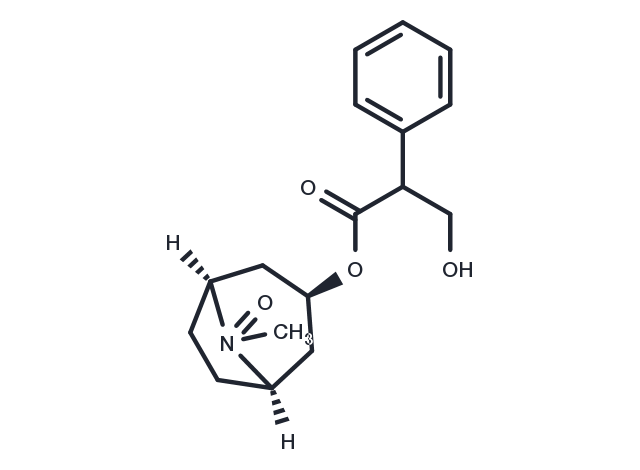Powder: -20°C for 3 years | In solvent: -80°C for 1 year


Atropine Oxide is a derivative of Atropine. Atropine is a competitive antagonist of the muscarinic acetylcholine receptor types M1, M2, M3, M4, and M5. Atropine is a medication to treat certain types of nerve agents and pesticide poisonings as well as some types of slow heart rate.

| Pack Size | Availability | Price/USD | Quantity |
|---|---|---|---|
| 25 mg | Inquiry | $ 1,520.00 |
| Description | Atropine Oxide is a derivative of Atropine. Atropine is a competitive antagonist of the muscarinic acetylcholine receptor types M1, M2, M3, M4, and M5. Atropine is a medication to treat certain types of nerve agents and pesticide poisonings as well as some types of slow heart rate. |
| Synonyms | NSC 72861, NSC72861, NSC-72861 |
| Molecular Weight | 305.374 |
| Formula | C17H23NO4 |
| CAS No. | 4438-22-6 |
Powder: -20°C for 3 years | In solvent: -80°C for 1 year
You can also refer to dose conversion for different animals. More
bottom
Please see Inhibitor Handling Instructions for more frequently ask questions. Topics include: how to prepare stock solutions, how to store products, and cautions on cell-based assays & animal experiments, etc.
Atropine Oxide 4438-22-6 NSC 72861 NSC72861 NSC-72861 inhibitor inhibit
